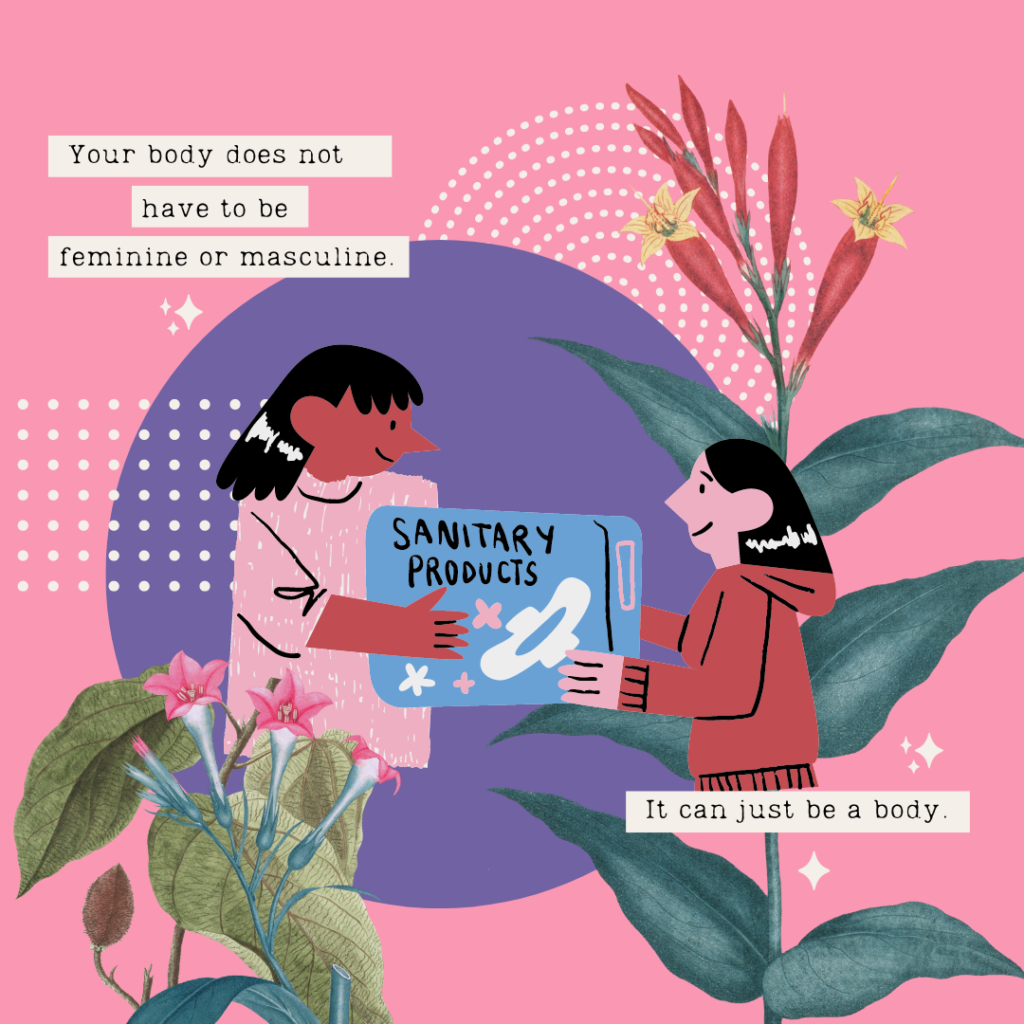
5 Ways to Practice Trans Body Positivity
For trans people, maintaining body positivity can be a hard task. We live in a binary-gendered society that divides people (and clothes, interests, jobs, etc.) into masculine and feminine. As frustrating as this can be, it’s reality.
When trans people come to terms with their gender identity, existing in such a gendered world can be really hard. Oftentimes, this is what leads to gender dysphoria. This is the distress a trans person experiences when their perceived gender does not align with their gender identity.
For example, a trans person might experience gender dysphoria when someone uses the wrong name or pronouns. Or gender dysphoria might be especially distressing when a trans woman is conscious of ways her body aligns with what society perceives to be male.
Trans body positivity is a challenge for many, likely due to the effects of gender dysphoria and the gendered world we live in. In fact, trans individuals often experience disordered eating, which may draw from challenges with body positivity and gender dysphoria. A study in 2015 revealed that trans college students were four times as likely to report an eating disorder diagnosis than their cisgender peers.
My own journey with gender began a few years back. And gender dysphoria, struggles with trans body positivity, and disordered eating habits have all been a part of it. While these tips haven’t made gender dysphoria disappear altogether, it has helped me develop habits that help me practice trans body positivity.
1. Socially Transitioning Lays Groundwork for Body Positivity

Socially transitioning can be especially helpful for people who are just coming to terms with their gender identity, or transgender people who don’t yet have resources to medically transition.
“Social transition” refers to a type of transitioning that shifts gender expression and presentation without the use of hormones, puberty blockers, or gender-affirming surgeries. Even if your gender goals include hormone replacement therapy (HRT) and/or surgeries, social transition can still be an effective way to practice trans body positivity.
Ways you might socially transition:
- Change your haircut and style
- Wear makeup
- Shift in clothing you wear (styles, colors, fabrics, etc.)
- Using a different name and/or pronouns around family and friends
Socially transitioning helps begin the alignment of the inner self with the outer self by inviting those close to us to be a part of that journey. Sometimes, this involves coming out to people; sometimes it doesn’t. You can change your physical appearance, like hair and clothes, without coming out.
The first ways I socially transitioned (as a non-binary person assigned female at birth (AFAB)) was by cutting my long hair into a bob (and then even shorter by the next year). I stopped shaving my legs. I started wearing larger, boxier shirts to hide my chest and hips. I told my partner, sister and close friends and asked them to use they/them pronouns for me.
The social transition didn’t magically make body positivity easy. But it did lay the groundwork for my own trans body positivity possible. I started seeing my body as something that aligned with my gender. I began experiencing gender euphoria. I owed it to myself and my body to lean into these feelings and questions about my gender identity.
Tip: if you’re a trans or non-binary person in school, try socially transitioning during the summer months. That way, you can adjust to changes in gender expression in your own time. You won’t have to worry as much about how people at school perceive those changes overnight.
2. Shift Gendered Self-Talk About Your Body

Because the world is so gendered, the way we refer to our bodies often follows our gendered programming. “Feminine curves” and “masculine voice” are descriptors we attach to our bodies without question. And a lot of the time, it has to do with our gender dysphoria and things we don’t really like about our bodies.
One way the transmasculine community does this well is by adapting language around their chest. Many trans men and transmasculine people deal with gender dysphoria about having breasts. Referring to this part of the body as their chest can help shift the mind away from the gendered aspect of this body part.
Another big shift is to simply refer to your body as “my body.” Your body is not a “masculine body” or a “feminine body.” It is just your body. Referring to your body as such without any gendered self-talk sets the stage for more trans body positivity.
3. Redefine Masculinity and Femininity

Another way to practice trans body positivity is by holding traditional ideas of masculinity and femininity lightly. Understand that you get to define what is feminine and what is masculine for yourself.
Of course, erasing what you’ve internalized over the years is not possible overnight. It’s something you have to work on all the time. But ultimately, you get to decide for yourself what is masculine and what is feminine.
For example, cropped shirts that sit above the hips and on the waistline (or higher) are masculinizing for me. One way I experience gender dysphoria is by acknowledging my wide hips. Cropped shirts create a boxier silhouette for my body and makes me feel more masculine than feminine.
Experimenting with different clothing and accessories that might traditionally be considered “feminine” or “masculine” might actually help you find new ways to express your gender. Or at least, feel more comfortable in your gender.
4. Remember Your Body Does Not Define You

How our bodies look to ourselves or others does not define who we are. People may misgender us based off how they perceive our bodies, but that doesn’t mean we don’t know who we are. Our gender identity is real and is not dependent on our bodies.
Growing up with red hair, I constantly heard that gingers have no souls. Middle school wasn’t a particularly fun time for me. But I know I have a soul. Just as I know having a body that many perceive as female does not mean that my non-binary gender identity is made up. (But it did take a while for me to get to this point. Don’t give up on yourself.)
5. Appreciate Your Body

Finally, regularly practicing appreciate and gratitude for your body is the best way to encourage trans body positivity. This can be from both a subconscious “acts of service” type of love for your body, or a more explicit “words of affirmations.” A mix of both is probably best.
Showing appreciation for your body through acts of service:
- Eating nourishing and tasty 3 meals a day.
- Making daily movement habitual. This can be walking, yoga, strength training, etc. Being mindful of how your body responds to different types of movement–not over-extending your body’s abilities.
- Practicing hygiene and maintenance that makes you feel good. (Use body wash scents you love. Maintain body hair in ways that affirm your gender.)
- Engaging your body in pleasurable sensory experiences. (What does your body like the feeling of? Using weighted blankets, petting cats, grass on bare feet, wearing certain fabrics, etc.)
Showing appreciation for your body through words of affirmation:
- “I love my trans body.”
- “I’m grateful that my body allows me to enjoy [sport, physical activity, movement].”
- “Thank you body for giving my soul a home.”
- “I’m happy that my natural body hair makes me feel affirmed in my gender.”
- “I am thankful that my height affirms my gender.”
Try your best to focus on the positives of your body and how it affirms your gender. For me (as a transmasculine person assigned female at birth), I focus my gratitude on my body hair and generally flat chest. Those things about my body in its natural affirm my gender.
Focusing on the things I’m grateful for help promote feelings of gender euphoria rather than dysphoria. And prioritizing this helps me stay body positive in gender affirming ways.
Keep a Trans Body Positive Attitude
Staying body positive is easier said than done. But practicing these steps on a regular basis can help us trans people find home and safety within our bodies. Especially if we are waiting for HRT or gender-affirming surgeries.
Being hurt and angry with the way our bodies look is a consequence of the society we live in. Not necessarily a fault of our bodies. Your body is a temple; try you best to treat it with kindness.

